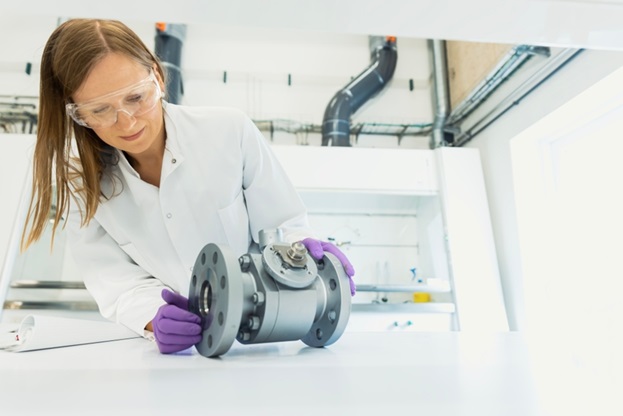Testing and documentation of component suitability for hydrogen distribution
Despite the lack of standards for hydrogen distribution, Danish infrastructure owners can continue developing pilot facilities for hydrogen distribution by testing the suitability of components for hydrogen use.
The Danish gas network currently delivers natural gas to Danish consumers, but can it also be used for hydrogen in the future?
An essential part of the green transition and Denmark's Power-to-X journey is the ability to export hydrogen through a dedicated hydrogen infrastructure. By building prototype facilities for hydrogen distribution, it is possible to simulate operations in a future hydrogen infrastructure, including both reception and departure stations and a pressurised pipeline.
Lack of standards complicates the selection of components for hydrogen distribution
There are currently no standards or approved test methods for certifying components, so it can be challenging to navigate the requirements for both component suppliers and facility owners designing facilities with components suitable for hydrogen.
"One option is to engage in dialogue with the Danish Safety Technology Authority, which can provide an overview of the risk parameters associated with hydrogen distribution," says Ditte Bilgrav Bangsgaard, a specialist at FORCE Technology. "In several Power-to-X projects where FORCE Technology has been involved, third-party certified components are required for the facility. Alternatively, the facility owner must obtain the necessary documentation for any components that have previously been tested for hydrogen," she adds.
To assist hydrogen distributors and other stakeholders in Power-to-X projects in achieving their goals, FORCE Technology has developed a testing programme that includes, among other things, leakage testing and material assessments. It is also possible to receive guidance and professional advice on how to get a facility approved by the authorities, as everyone is still navigating uncharted territory,Ditte Bilgrav Bangsgaard / Specialist, FORCE Technology
Testing ensures documentation for suitability assessment
If the facility owner wishes to use components that have previously been tested for hydrogen, the hydrogen suitability must be confirmed according to similar guides and standards, such as ASME B31.12 and Bek. 99.
"To assist hydrogen distributors and other stakeholders in Power-to-X projects in achieving their goals, FORCE Technology has developed a testing programme that includes, among other things, leakage testing and material assessments," Ditte explains. "It is also possible to receive guidance and professional advice on how to get a facility approved by the authorities, as everyone is still navigating uncharted territory," she adds.
Knowledge as a foundation for future hydrogen distribution
There is still a long way to go before hydrogen distribution becomes as commonplace as natural gas distribution. Over time, standards will be established, making developing and approving facilities easier.
"New standards are under development, and we are closely monitoring the process. Additionally, we are happy to share the insights and knowledge gained from our work on Power-to-X projects," Ditte Bilgrav Bangsgaard concludes.


Related content

Safe hydrogen transport
/Article
Safe hydrogen transport is an “enabler” for Power-to-X.

Power-to-X – materials, testing and storage
/Industry
Power-to-X is a crucial part of the green transition of our energy supply.

HPHT testing in realistic environments
/Facility
Test facilities for testing of metals, coatings, polymers, composites and assemblies/ components.

